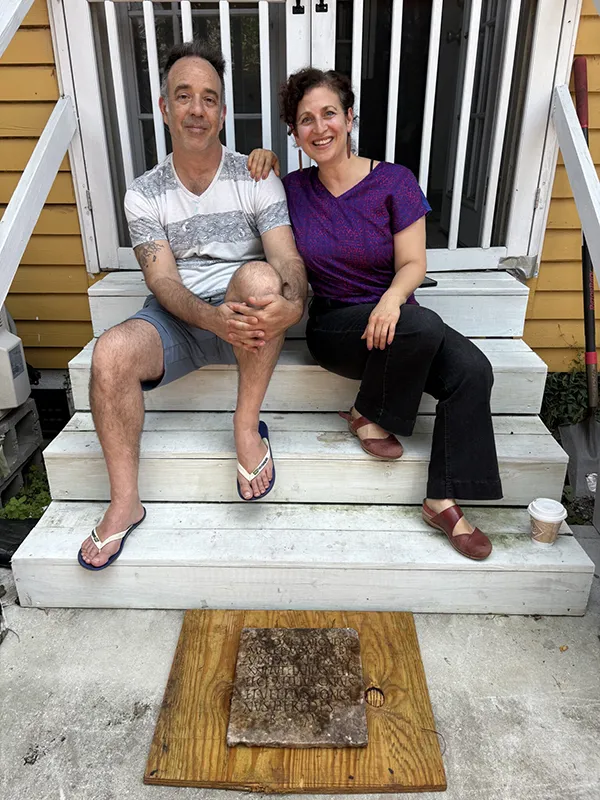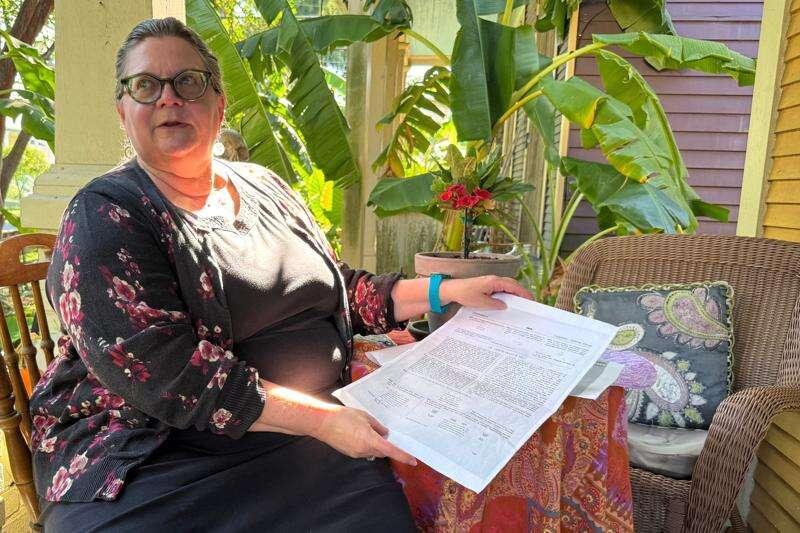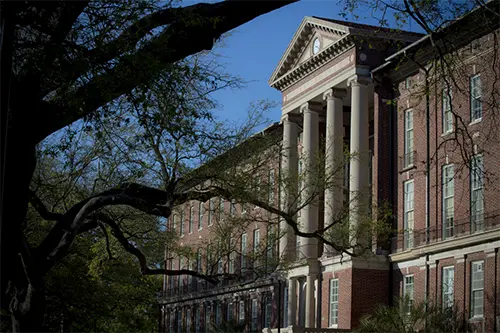
Last spring, Classical Studies Professor Susann Lusnia received an email from Daniella Santoro, an adjunct professor in Tulane’s School of Professional Advancement and homeowner in the West Carrollton neighborhood near campus. Santoro needed Lusnia’s help in identifying a mysterious marble stone — inscribed in Latin — that she’d uncovered while gardening in her backyard.
Lusnia teaches Roman Art and Archeology courses in the School of Liberal Arts, and is currently writing a textbook on topography and monuments of Ancient Rome. Using key words and phrases from the Latin text, she was able to quickly identify the writing as a funerary inscription for a sailor in the Roman imperial fleet during the second century A.D.
“Susann is probably one of a few people on this planet who knew what this was and how to identify it, and she was a few blocks away from me in her office at Tulane,” says Santoro, who also earned her PhD in Medical Anthropology in the School of Liberal Arts. She had tried doing internet research and using AI to translate at first, before contacting Anthropology Professor John Verano, who put her in touch with Lusnia.
“This is a reminder that the specialized knowledge and experience that Dr. Lusnia has can never be replicated,” Santoro continues. “You never know when you might need a Roman archaeologist!”
Lusnia’s research went on to place the tombstone as one of several found in an ancient Roman cemetery in Civitavecchia, Italy, in the 1860s. In 1918, it was moved to the Archeologico Nazionale di Civitavecchia Museum before going missing following extensive bombing during WWII. Lusnia soon got in contact with the museum; over the summer, she was able to meet with the director and staff in Civitavecchia and view similar inscriptions from the site.
Since then, the incredible discovery has sparked interest across the globe and set off a mission to repatriate the item. Santoro also enlisted the help of UNO Archeology Professor D. Ryan Gray, who wrote an article for the Preservation Resource Center of New Orleans. WWL-TV later covered the story, eventually leading to the answer of how the tablet made it to a backyard in New Orleans.
The tablet was turned over to the FBI Art Crimes unit in May — the first step in its lengthy repatriation process. “We’re looking forward to hearing when our lost Roman sailor finally arrives back home, and we can all celebrate his return,” says Lusnia.



